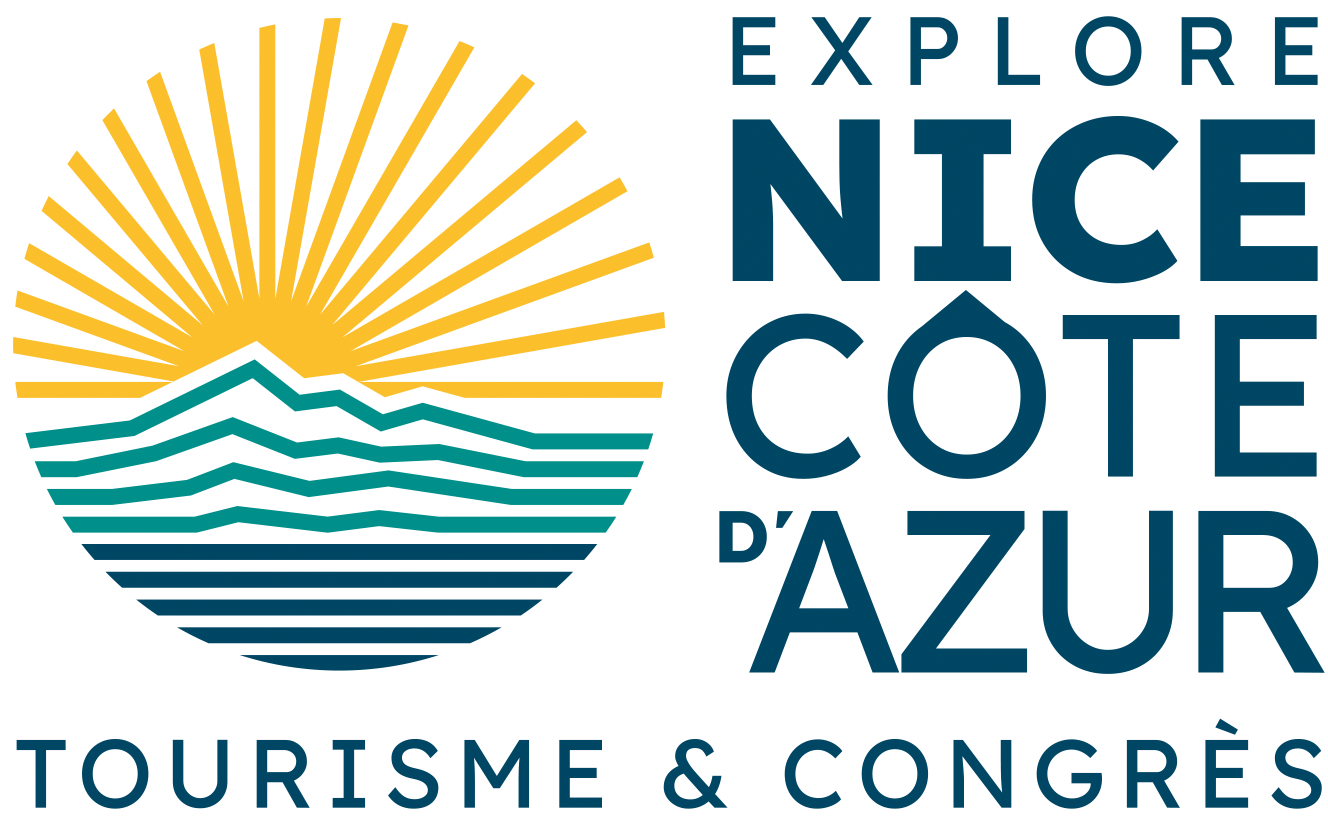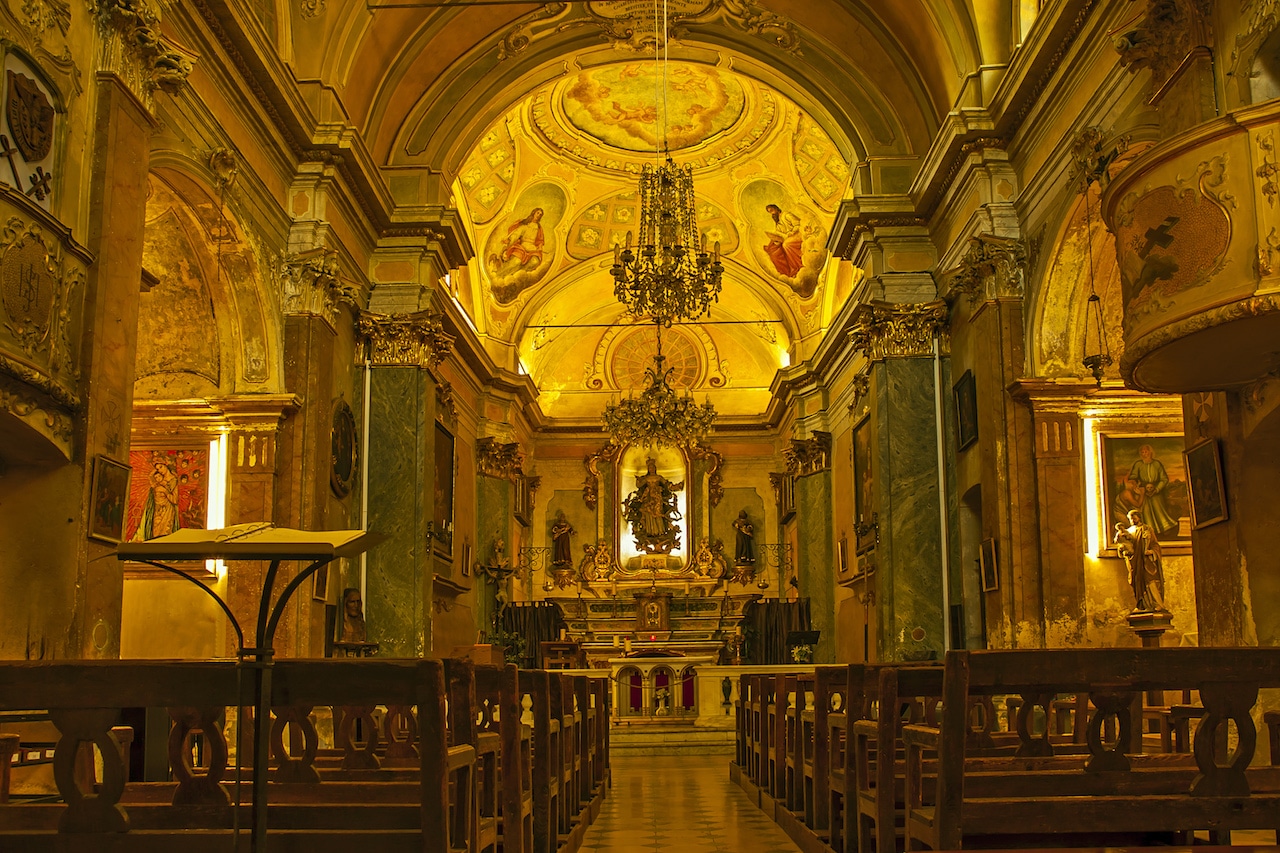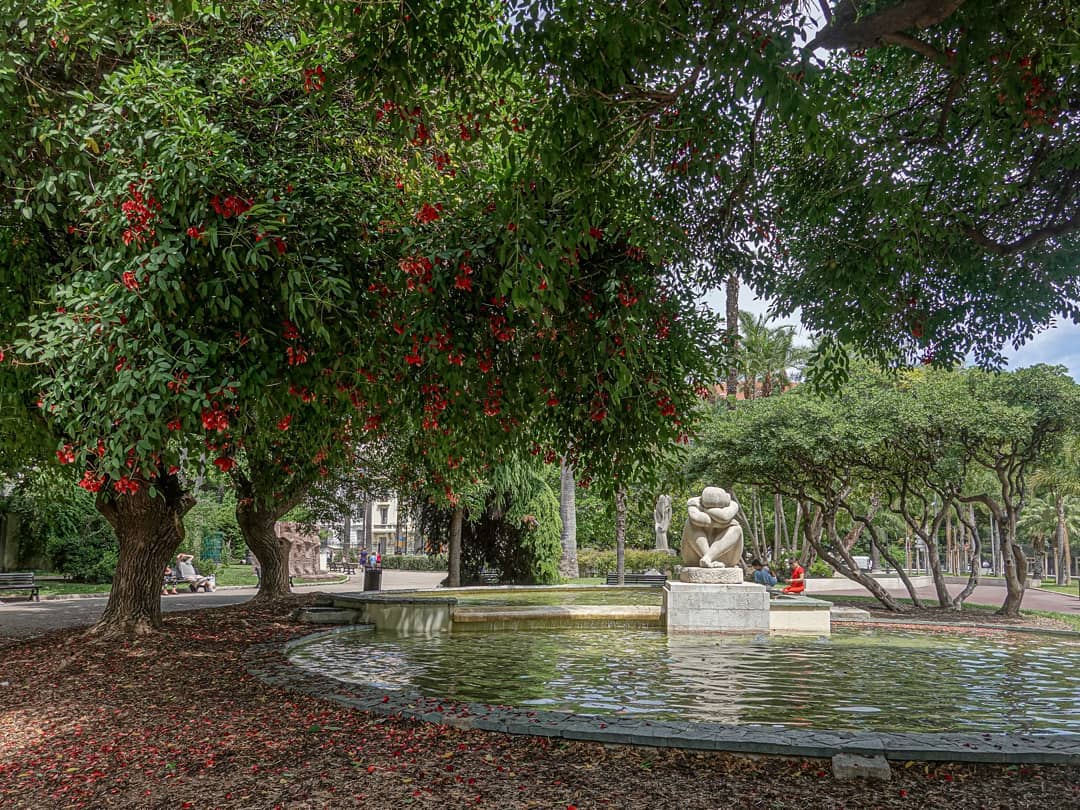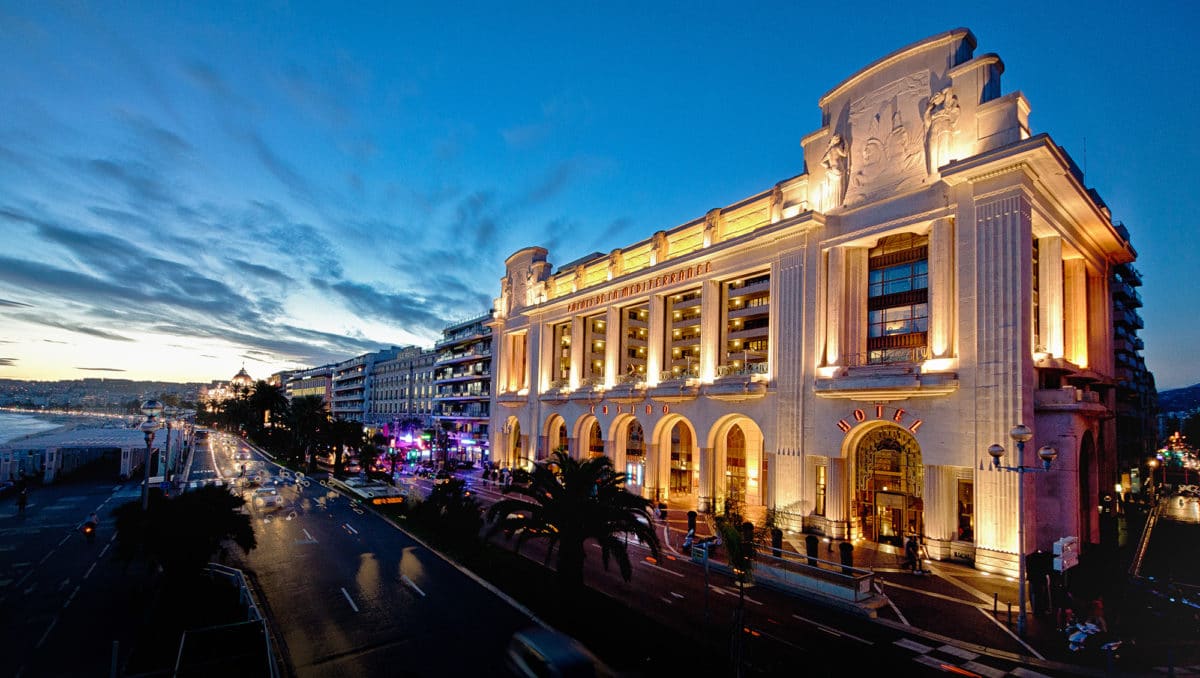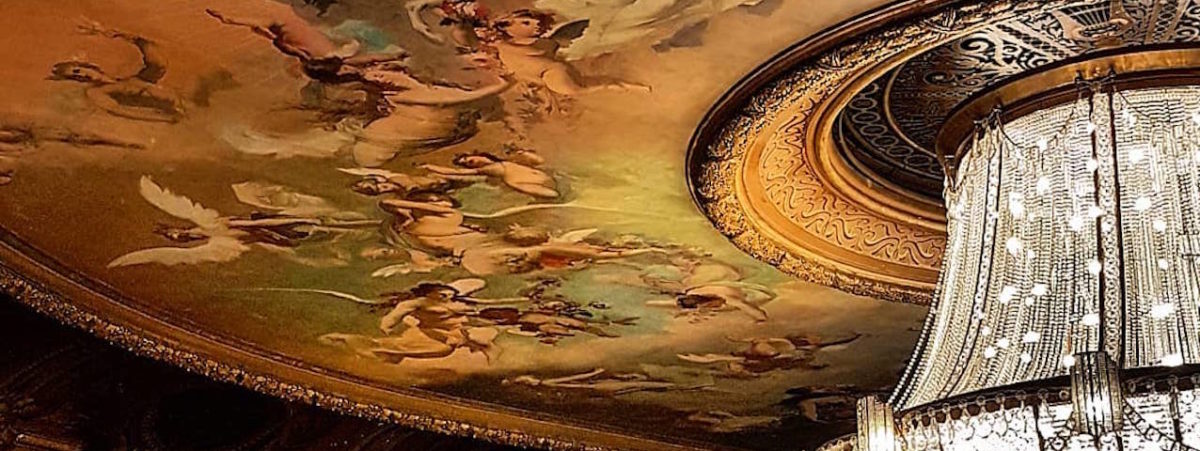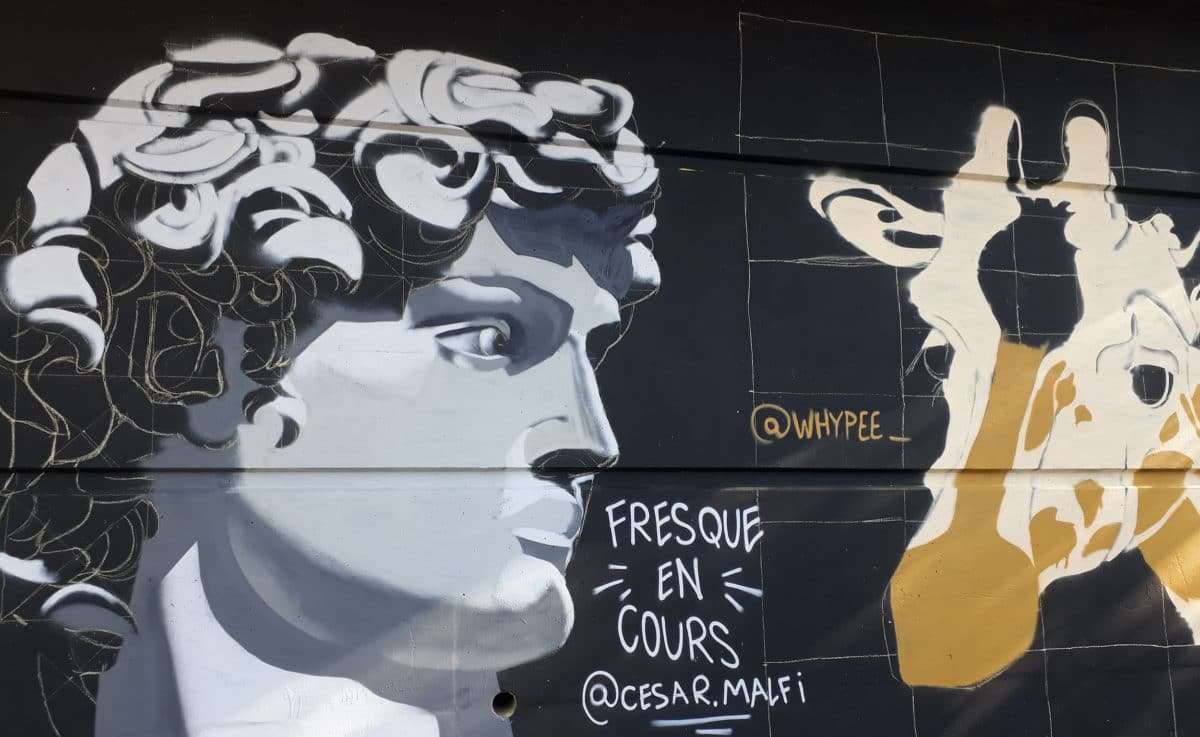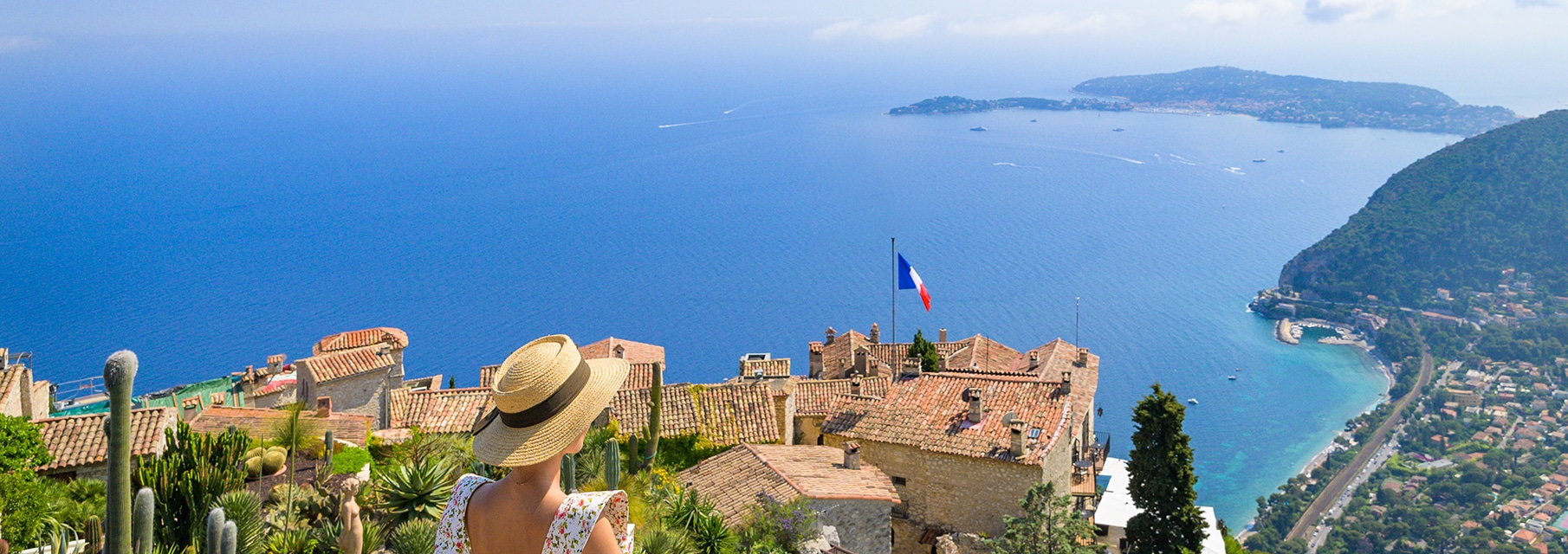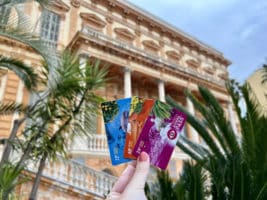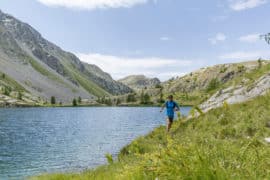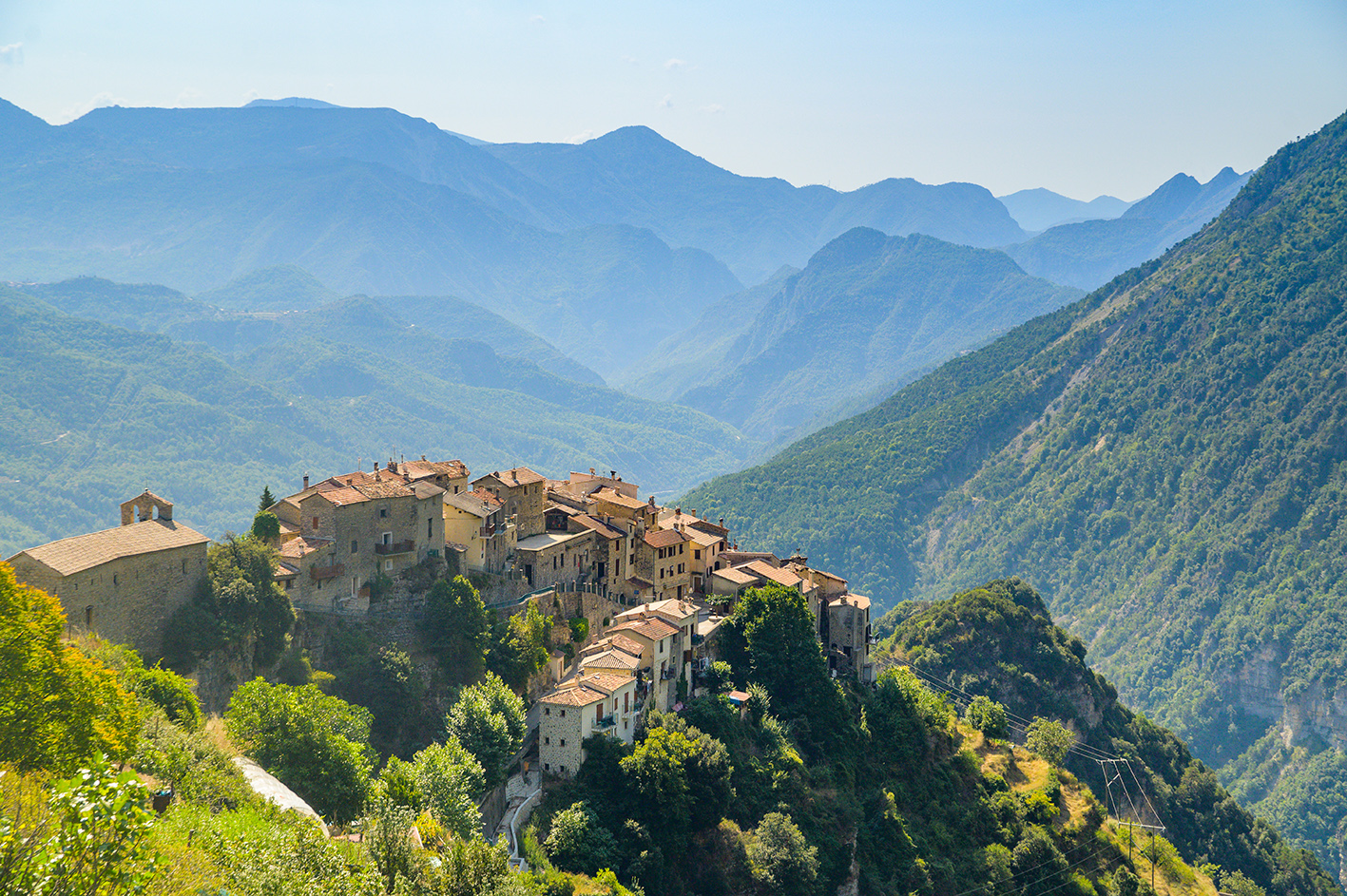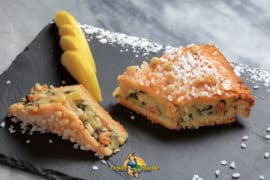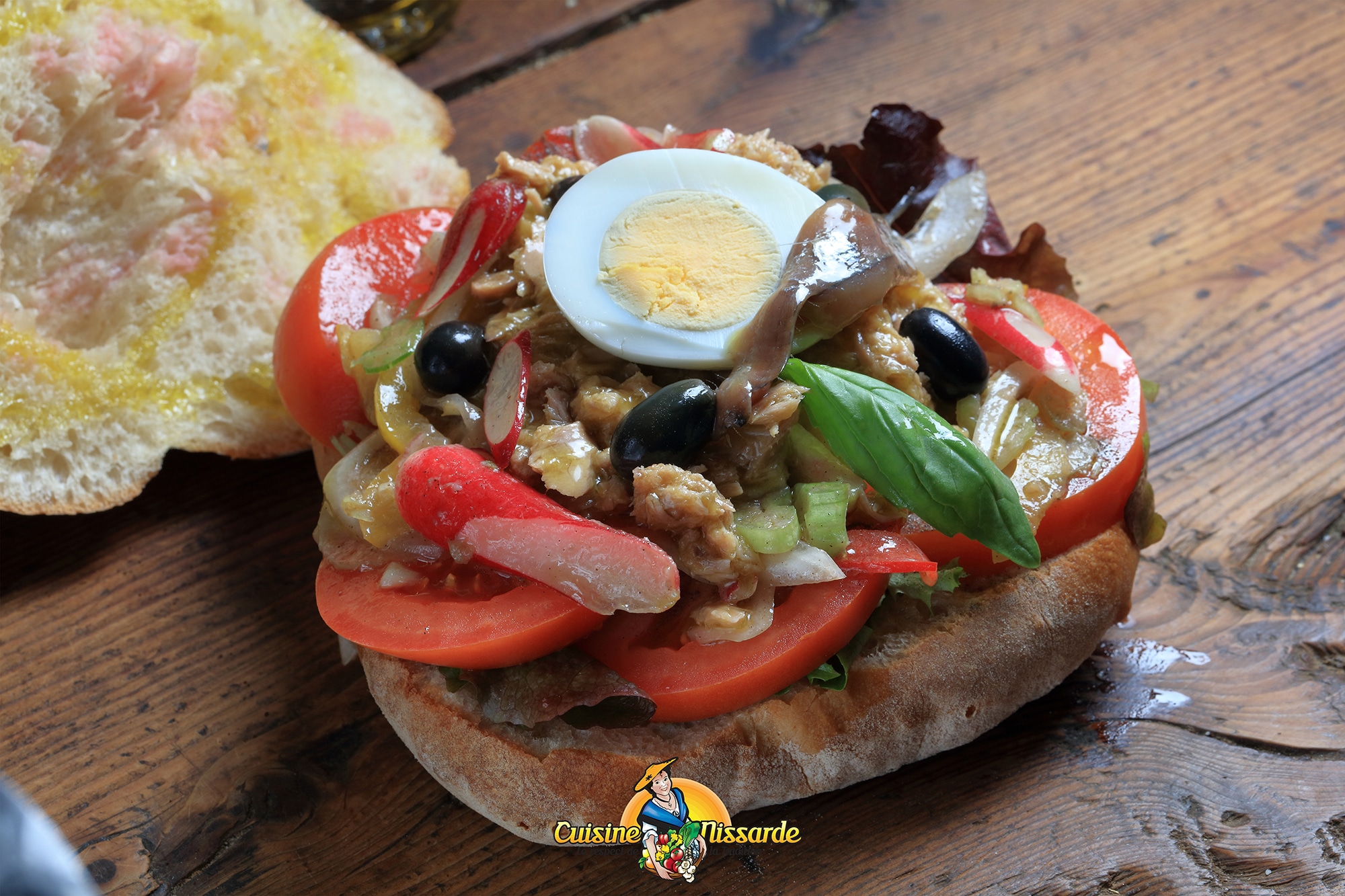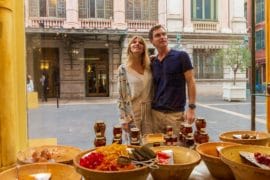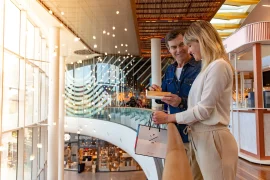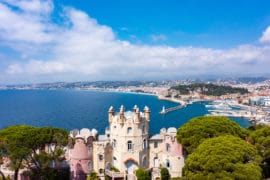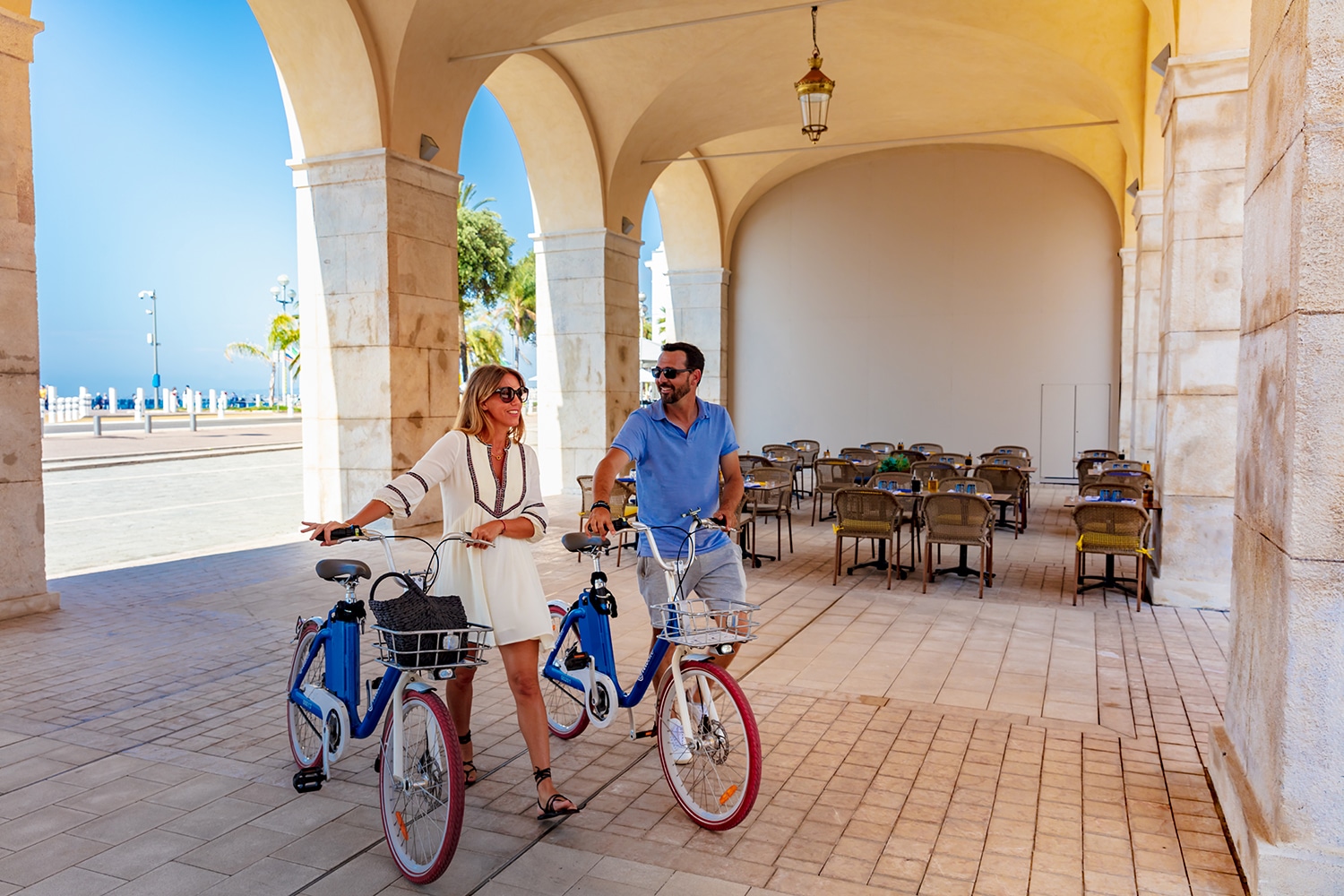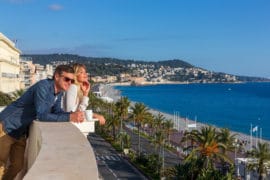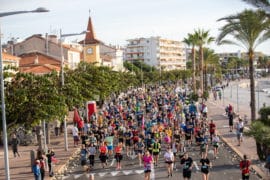Sacred art and religious heritage
11 March 2023
Nice Côte d’Azur promises us the sea, the sky without clouds, wild nature, here perhaps more than elsewhere we feel on a land “blessed by the gods”.
Since the earliest times, the men of this country have thanked, invoked and asked for protection from the higher powers. This impulse can be found from the Middle Ages on display in our churches and chapels, a sacred art full of surprises to be discovered around Nice.
1 – On the road to Brea and the primitive people of Nice
The rural communities scattered over our territory have been organized since the Middle Ages to build, maintain and decorate churches, chapels and religious buildings, often using itinerant artists.
During the 15th and 16th centuries, several itinerant painters travelled through the Comté de Nice, originating from Nice or elsewhere, sometimes from Italian Piedmont. They decorated chapels and churches with frescoes characteristic of what will be called the Nice School, whose most famous artist was Louis Bréa. His brother Antoine and his nephew François also left us many works. The brilliance of the gold, the magic of the colours including the Bréa red created by the master, the finesse of the details, these works of art plunge us into a past full of mystery.
Others arrived from Italy, Liguria or Piedmont, and decorated the painted chapels of the High Country. Baleison and his art with softness and finesse, Canavesio and his scenes of passion full of violence and suffering, their works have crossed the centuries and the emotion felt when discovering them is all the greater.
For more information, the Cercle Bréa offers all year round conferences and outings to discover the sacred art around Nice. Contact: 00 334 93 27 27 01
–> In search of the Bréa in Nice and its surroundings
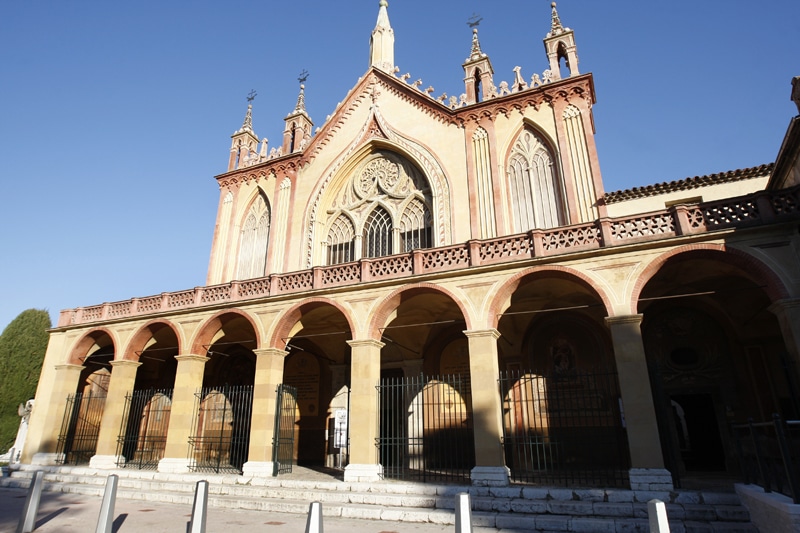
First of all, a place that conceals some of the most beautiful works of Louis Brea: the Monastery of Cimiez.
A pietà (1475) and a crucifixion scene (1512). The finesse of the line, the softness of the faces, all the genius of the master is offered to you.
Opening hours of the church: 7:30 am to 6:30 pm.
The church of Saint-Martin-Saint-Augustin then, Place Saint-Augustin, has a pietà by Louis Bréa, the only panel of an altarpiece that has unfortunately disappeared. Open every day except Monday from 8am to 12pm and from 2pm to 6pm.
Two elements of a wooden altarpiece painted by François Bréa in 1550 have been restored and are visible in Isola village (Saint-Pierre church) and in the church of Saint-Etienne-de-Tinée. The golden sheen of their magnificent illuminations will charm you.
Churches open every day, under video surveillance.
In Saint-Martin-Vésubie, the church also conceals a treasure: 4 panels of Saints (including the Saint-Patron, protector of the church) attributed to the Bréa school.
Do not leave without discovering the sanctuary of the Madonna de Fenestre, the polychrome statue of the Madonna is said to have chosen its location on this plateau nestled in the heart of the mountains. A change of scenery guaranteed! The statue can be seen all summer long at the sanctuary and is brought back down to the church from September 8th. The church is open every day in July and August. Information at the tourist information office.
–> Tour of the painted chapels : Let’s discover the primitive people of Nice in the High Country
In the towns and villages of the Metropolitan area, treasures await you. Located at the entrance to the towns, the chapels were a protective rampart against diseases such as the plague. Painted during the 15th and 16th centuries, their decorations tell the life of the Saints or biblical epics, scenes of passion. They had a moralizing role and today a certain emotion emanates from these so colourful paintings and from these characters who contemplate us, like a leap in time….
Let’s start our tour with the chapel Notre-Dame des pénitents blancs at the Tour-sur-Tinée.
First of all, some information on the brotherhoods of penitents that you will hear about all over the County of Nice. These confraternities brought together lay people in the practice of the duties of devotion and charity. Clearly, these penitents took care of social work and accompanied the Christian throughout his life: from baptism to religious feasts, from helping the sick to accompanying the dead and supporting bereaved families.
Every village has a chapel, or even several, white or black penitents and some brotherhoods still exist and still participate in funerals.
The interior of the chapel of the Tower was decorated from 1481 by the painters Brevesi and Nadal from Nice with scenes of the passion of Christ. Keys available at the Town Hall 00 334 93 02 05 27.
Clans: the village with many painted chapels! You will discover the marvellous frescoes in the chapel of Saint-Michel due to Andrea da Cella in 1515 and also the frescoes representing the life of Saint-Antoine in the chapel of the same name (15th century). Guided tours are available on request at the tourist information office. The Collegiate Church of St. Mary is open every day.
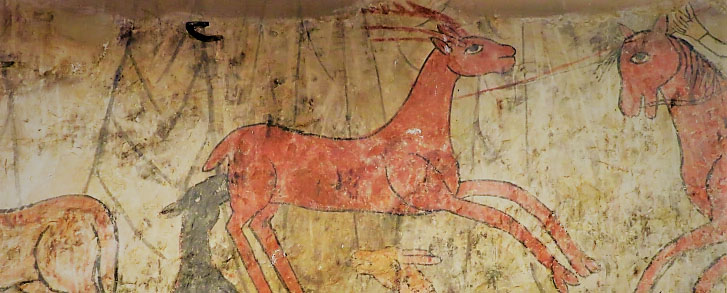
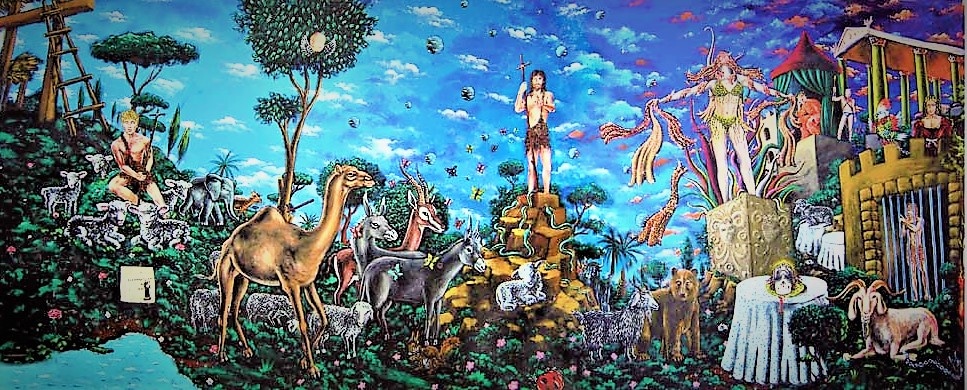
Venanson: the view from this village perched on its rocky peak is grandiose. You will also go up there to admire the chapel of Saint-Sébastien, its interior walls being illustrated with scenes from the life of the Saint, attributed to Baleison in the 15th century. Keys are available from the town hall on 04 93 03 23 05.
Roure: Charming village above Saint-Sauveur-sur-Tinée, you will find the chapel of Saint-Sébastien and Saint-Bernard, whose entire interior is painted with frescoes by Andrea da Cella in 1510. Keys available on presentation of an identity card at the tourist information office in July and August, or at the town hall from September to June.
Roubion: A little further up the road to the Col de la Couillole, in the village of Roubion, stop to visit the 15th century chapel of Saint-Sébastien. Saint-Sébastien is very represented in our churches and chapels, he was invoked with Saint-Roch against the plague. His life is reproduced here on all the interior walls, by a master itinerant painter who has not left us his name. Keys available on request at the tourist information office.
Further up the valley, Saint-Etienne-de-Tinée and the resort of Auron conceal pictorial treasures in their various chapels.
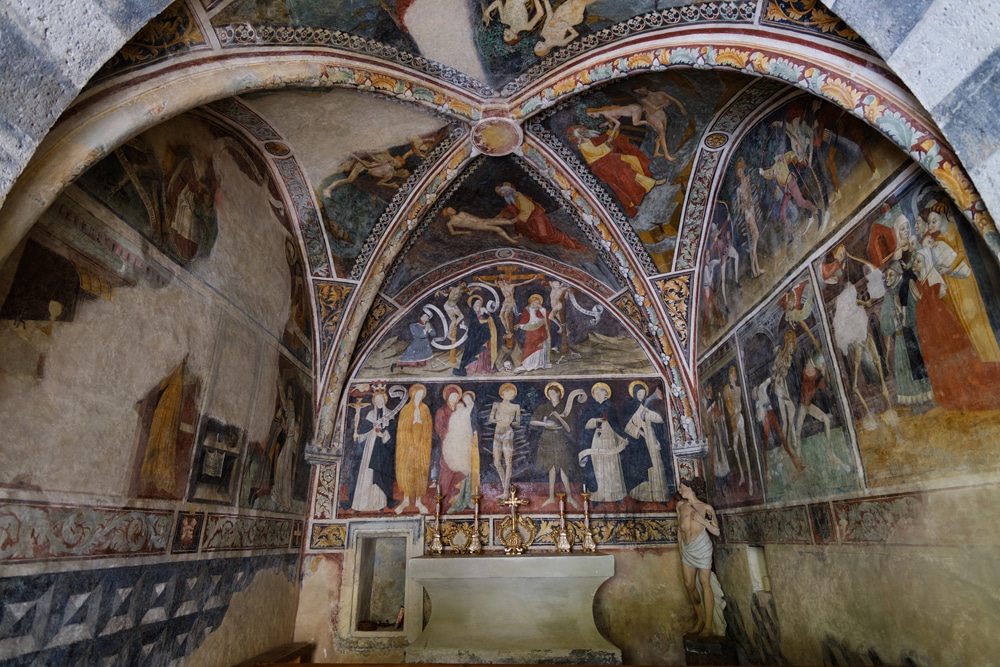
In Saint-Etienne-de-Tinée, the chapels of San Sebastian (decorated by Canavesio and Baleison in the 15th century), Saint-Maur and the chapel of the Convent of the Trinitarians (which has a scene from the Battle of Lepanto) can be visited all summer long. Visiting hours are available at the tourist information office.
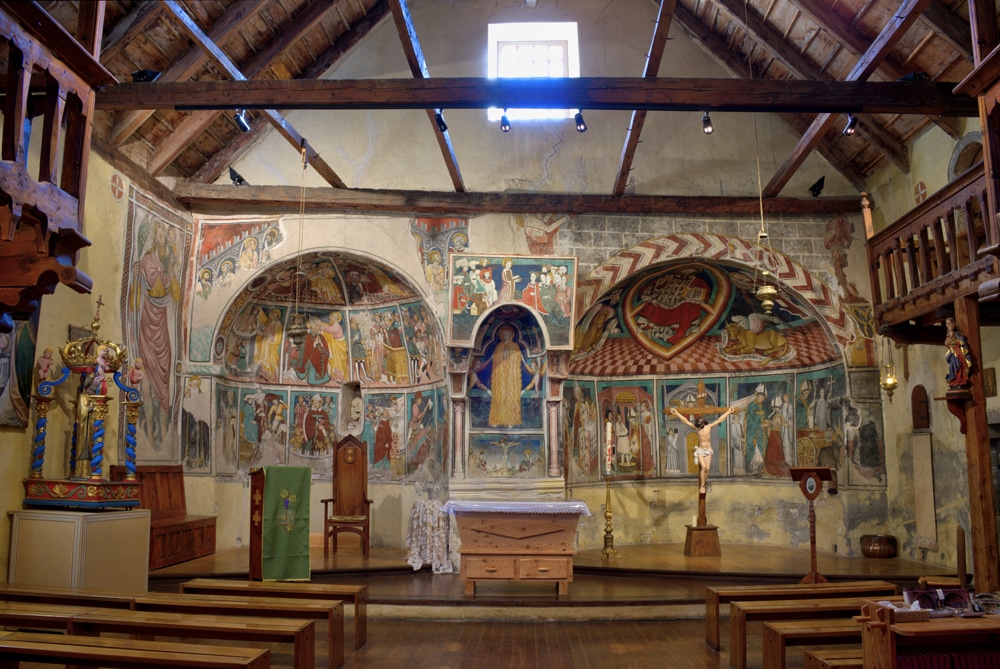
Auron, a ski resort and departure point for many hikes and mountain bike routes, has a charming chapel with a Lombard-style bell tower. Its interior will dazzle you with painted walls detailing the life of Saint-Erige.
Accompanied visits all summer long or visit with an audioguide, information at the tourist information office.
2 – Barocco, Baroque art omnipresent in our churches
We cannot evoke Nice Côte d’Azur without mentioning the baroque art that is expressed in many buildings along our walks.
Baroque art is above all a religious art which developed from the end of the 16th century and throughout the 17th century, supported by the Roman Catholic Church. Theatrical and based on magnificence, trompe l’oeil, it could thus serve the cause of the church by supporting its doctrine, in opposition to Protestantism and its austerity.
All in gilding and pomp, it can be found everywhere in the religious buildings of the region.
–> Nice Baroque
To discover all the treasures of Baroque Nice, there is nothing better than a discovery tour of the old town.
Nice is the city of the baroque, all the districts abound in religious buildings where light and colours compete with brightness.
First of all, the church “du Jésu” imitating the church of the “Gesù” in Rome, which is the reference in terms of Baroque construction, is the oldest in the region. Its construction began in 1607 and was completed in 1650. Its rectangular plan with one nave is inspired by the churches of the late Renaissance in Italy.
The Cathedral of Sainte-Réparate is the largest sanctuary in Old Nice. With a particularly sumptuous decoration, all the richness of the baroque art made of light and shimmering gilding is exposed there.
Other baroque churches are to be discovered as you wander around Nice: the church of Sainte-Rita, the church of Saint-Martin-Saint-Augustin, the chapel of the Holy Sepulchre, the chapel of the Mercy (black penitents) which is a jewel with the gold and painted decorations of its vaults and its elaborate columns…
Find all the tours of the city.
With Nice Greeters, you can also discover the city in a different way, with a passionate inhabitant who volunteers to help you discover what is dear to his heart
–> Baroque, here and elsewhere
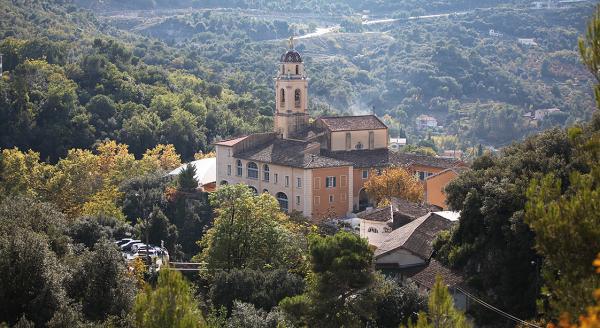
Let’s get out of Nice and go for a little walk on the side of La Trinité, to discover a place out of time, the sanctuary of Notre-Dame-de-Laghet. Still an active place of pilgrimage, its richly decorated church is built on the ruins of a primitive chapel. Calm and serenity await you. Possibility to eat at the table d’hôtes or to sleep at the hostelry run by the Benedictine sisters of the Sacred Heart of Montmartre.
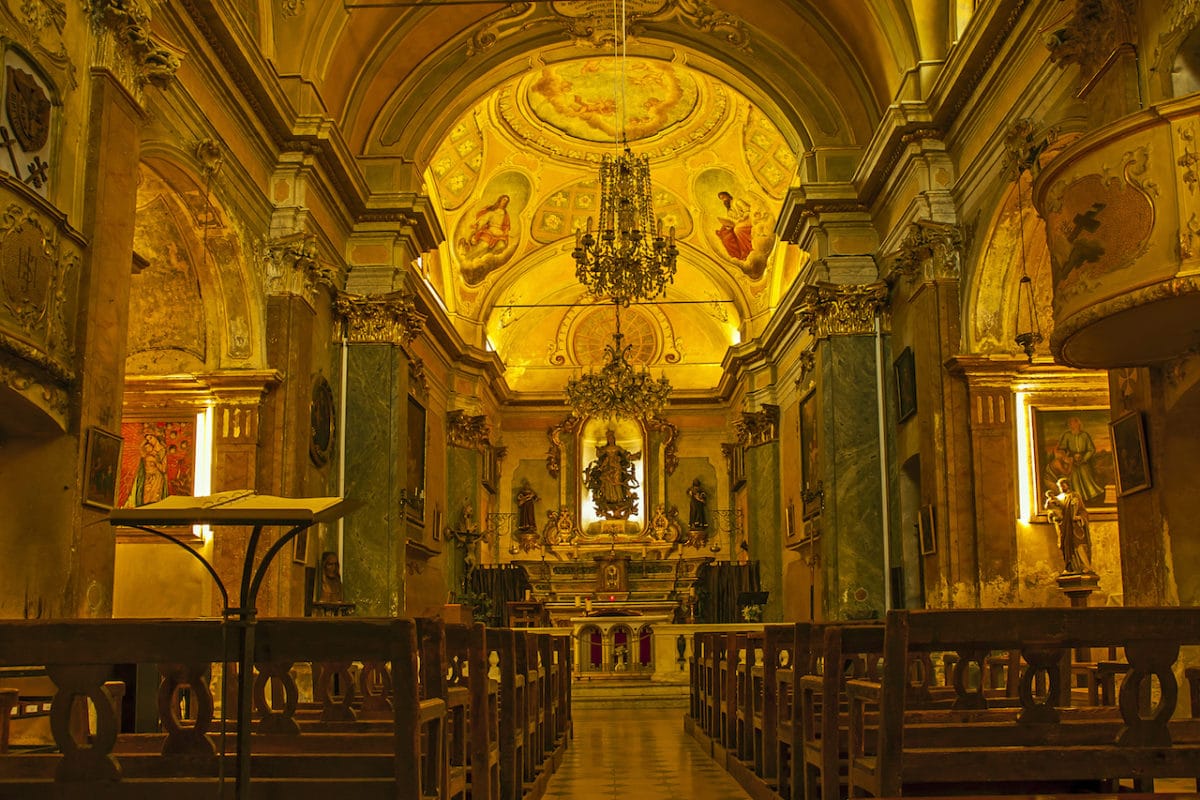
Not far away, the town of Eze offers us a plunging view of the Mediterranean, known for its typical alleys and its exotic garden, a charming church is also worth a visit. It is characterized by its trompe l’oeil play: real and fake windows answer each other on both sides of the nave; the real pulpit faces the fake pulpit in a baroque spirit.
In the hills, in Levens, you can discover the church of Saint-Antonin in baroque style, a church with 3 naves separated by two rows of columns. Two chapels, white and black penitents are open, also in baroque style.
Information at the tourist information office where you can get the flyer of the signposted heritage circuit in the village. The commune also offers guided tours of the church and the village at the rate of 3€/ pers. Booking is obligatory.
Finally, as you will have understood, most of the churches you will meet during your walks in Nice Cote d’Azur have been rebuilt in a baroque spirit during the 17th and 18th centuries. It’s up to you to find elements of this baroque art: first of all, the sumptuousness of the decorations, which sometimes extends to the outside facades. These churches are overflowing with ornaments, including sumptuous carved wooden altarpieces with often twisted columns and bright gilding. Then you will see elements created to deceive the visitor: fake marbles made of paint, fake windows, the art of trompe-l’oeil being very advanced in baroque churches. The supernatural is there to jump out at us and thus offer the visitor the entrance to the world of the marvellous…
3 – Modernity and Revival of Sacred Art
Sacred art is still very much alive in the 20th and 21st centuries and great artists, lovers of our region, have left their mark in our churches and chapels.
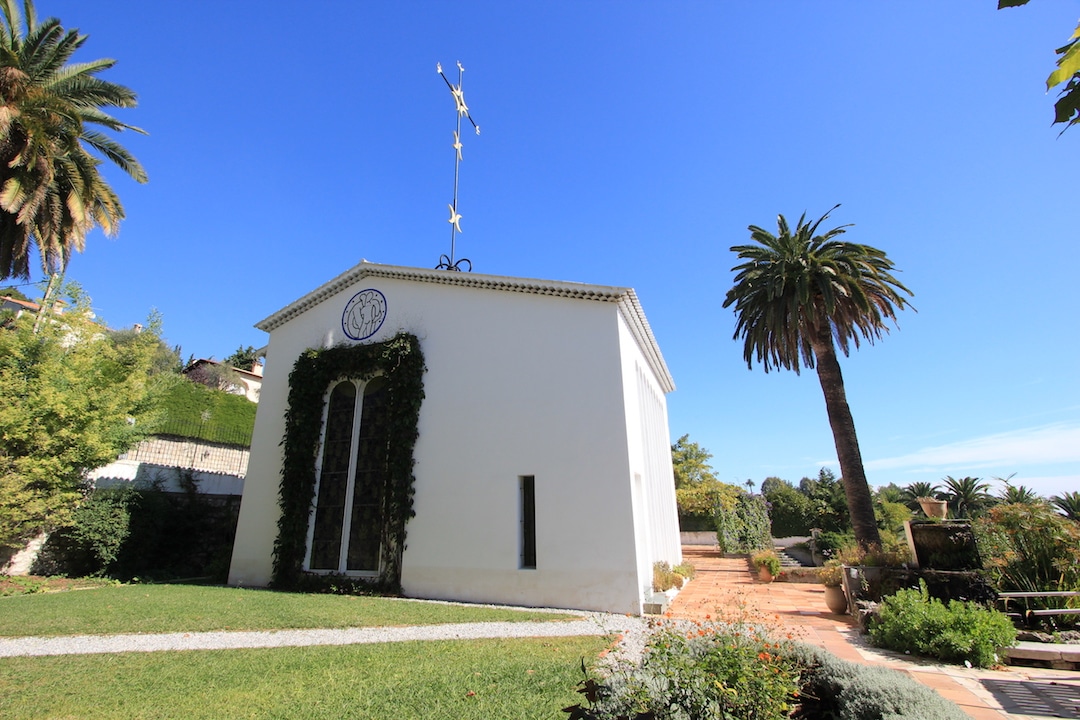
In Vence first of all, you must absolutely discover the chapel of the rosary. Henri Matisse designed and decorated it entirely and he himself considered it to be his masterpiece. Discreet on the outside, all its splendour is revealed inside where the stained glass windows reflect on the marble floor, creating changing patterns and so luminous!
Another detail concerning Vence, in the interior of the smallest cathedral in France, is a mosaic by Marc Chagall. Information at the tourist information office.
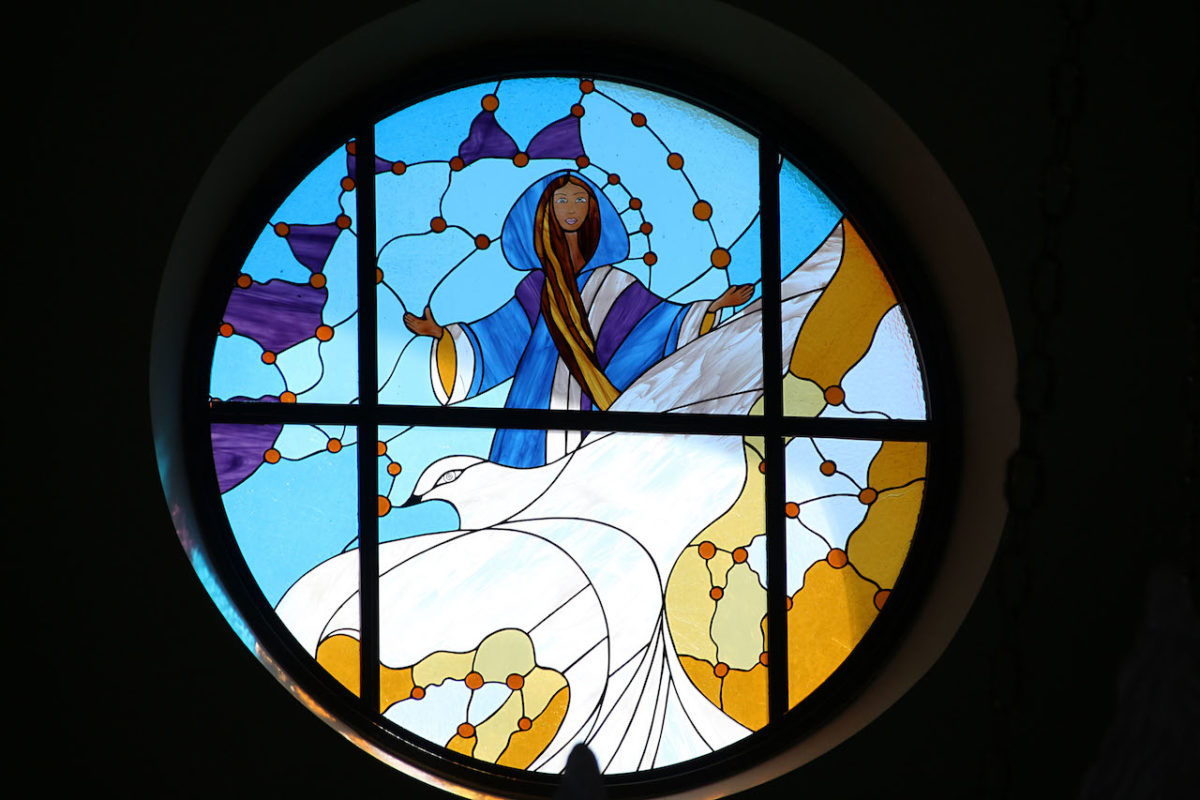
In Villefranche-sur-Mer, the Chapel Saint-Pierre (patron saint of fishermen) has been restored and decorated by Jean Cocteau inside and out. In love with Villefranche-sur-Mer, he let all his art express itself here. Opening hours: from 9:30 to 12:30 and from 14:00 to 18:00 every day. Admission: 3€/ pers.
Still by the sea, in Saint-Laurent-du-Var, the church of Saint-Joseph built in 2008 has magnificent modern stained glass windows of great finesse. It is open to the public.
To finish, you have to go up the Tinée valley and push on to Clans where the Moya chapel will amaze you with its monumental frescoes. The artist from Nice has decorated all the walls of the chapel of Saint-Jean-Baptiste by taking up the stages of the Saint’s life. Explosion of colours, richness of details, the artist takes us on a journey inside his work.
Beauty of the sites, strength of the works, spiritual charge of the places, come with us to discover the art of the sacred around Nice Côte d’Azur, you will leave with a marvellous full luggage! Our tourist information offices will advise you and accompany you throughout this discovery, see you soon!
Photo Credits: Succession H. Matisse Image, Balloïde photo, Guidestchristophe.com, Anthony Turpaud, BIT Saint-Laurent-du-Var et Clans, Ville d’Eze et Club Photos AMSL.

